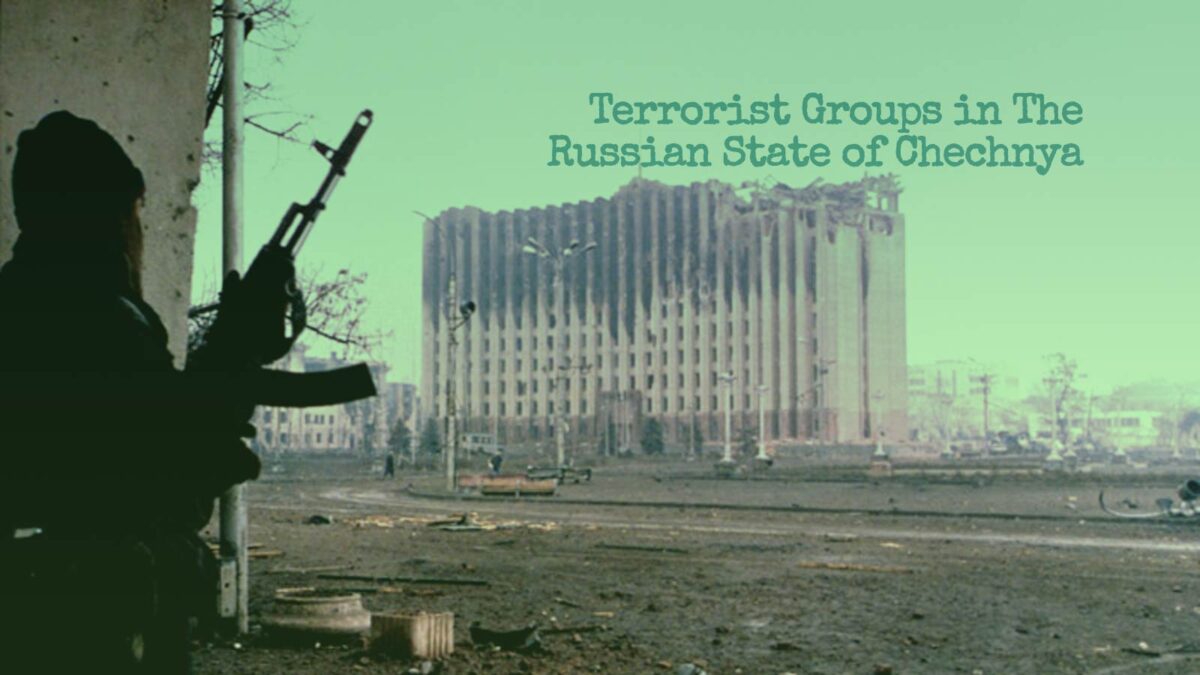The Russian State of Chechnya is located in the southern parts of Russia, directly west of the Caspian Sea in the mountainous Caucasus region. Chechnya is occupied predominately by a large Muslim ethnic group that have been in the area for centuries. The Russians have oppressed the Chechens for hundreds of years, and have been in several guerrilla wars with the nation. Chechen terrorist groups are known to be connected and financed by other well-known terrorist organizations throughout the world.
In the early 17th century, Russia launched a series of attacks on the area of modern day Chechnya. The Russians were interested in the Caucasus area for military and trade routes to Persian territories. However, local Ottoman Turks defeated the Russians. During the 1700s several small disputed and invasions occurred. But in 1784, Sheikh Mansur (Chechen military leader) declares a holy war with Russia because of their encroachment of the Northern Caucasus. In 1785 Mansur’s army defeats Russia in the Battle of the Sanja River. In this battle more than 600 Russian soldiers were killed. After this victory Mansur leads his troops into Russia to take over a fort in Kizlyar. Subsequently, Mansur’s troops were defeated, and Russia once again took a small foothold in the Caucasus. In 1791, Mansur was captured by Turkish forces, and was held in prison until his death in 1794. He became a legend to the Chechen people.
In the 19th century, there were many captures, and small disagreements between the Russians and Chechens. In 1832, General Rosen (Russian Officer) led almost 20,000 men into modern day Chechnya. They capture several forts and destroy villages and crops. Hamza (Imam of Chechnya) then tries to negotiate peace with Russia. Several months later he was murdered. Newly elected Imam Shamil led troops from Chechnya to rid the Caucasus region of Russian presence. Determined to conquer the region, Russia deployed 200,000 men to fight in the Caucasus.
At that time Shamil’s army was not even 30,000 men strong. Shamil quickly withdrew his men and began to reconcile with the Russians. However, the Russians did not accept Shamil’s terms, and ordered Shamil’s surrender. Shortly afterwards in 1839, Russians attack Shamil’s headquarters. This leads to a battle, which then leads to the Caucasus war. In the Caucasus war, Chechnya lost its whole economy and half it’s population. In 1959, Shamil forfeits the Caucasus war to insure the safety of his family. With Chechnya now under Russian rule, 80,000 Chechens leave for Turkey.
In the early 1900s, various small rebellions arise against the Russians in Chechnya. During World War II, Chechnya collaborated with the German Army and others to go against the Soviets. Because of this, Joseph Stalin sent many Chechens to Siberian labor camps much like the Nazi Concentration camps. In 1953 the survivors were released upon Stalin’s death. The nation state of Chechnya declared its independence in 1991 due to the collapse of the Soviet Union. However, Chechnya today is still slightly controlled by the Russians.
At the 38th international security conference it was sated that Chechnya is still one of the fronts of the world war on international terrorism. Since the end of the last war in Chechnya, non-native fundamentalist influence has grown stronger in Chechnya. There have been several reported ties between Amir Basayev, leader of the Chechen terrorist group, and Osama Bin Laden. Bin Laden reportedly finances the Chechen terrorist group in their fight against the Russians. Chechnya has become a center for Islamic fundamentalists and organized crime.
Different forces that control parts of Chechnya gain profits through drug and weapon trafficking. Many of these activities and other terrorist acts also occur inside and around Russia. Following their deeds, the terrorists retreated to Chechen territory away from Russian justice. The region has become a predominant base for international terrorism. The Chechen government supports many of these acts of terror and crime.
Chechen terrorist acts:
- Failed plot to kill Russian resident Vladimir Putin.
- Hijackings of a Turkish ferry and Russian airliner.
- Seizure of over one thousand hostages.
- Apartment bombings.
In the mist of all this terror and crime there is a civilian Chechen population. Profoundly, even though the militant groups are fighting for Chechnya’s independence, the civilian population is against the terrorist acts towards Russia. The lack of support from the civilians is most likely due to the way the terror effects their daily lives. Families and individuals can be swept away by fundamentalist militiamen or military forces whose explanation is only “an act of Islam.” Also, young people can be easily recruited into special commando groups. These groups often participate in terrorist operations, bank robberies, and drug related activities in Russia, Western Europe, and the ex-Soviet republics.
In the Islamic world, the Chechen’s struggle against Russia is a very prevalent issue. The many Muslims support the state in different financial ways. Al-Jazeera, a very popular Arabic satellite news station, broadcasts repots on Chechnya. The reports include information on Russian attacks that is often shown with graphic footage from scenes within Chechen territory.
The Chechen terrorist groups are fighting for Chechnya’s full independence, but not in the will of its civilians. Does the history of Chechnya and all of its struggles with Russia justify terrorist acts? What is the difference between nationalistic terrorists and terrorists that do harm for no reason? The Chechens have been abused for centuries, yet they have gained predominant independence.
History has shown the Chechen government supports illegal activities inside Chechnya and Russia, including terrorism and drug weapon smuggling. The complex history and situation in Chechnya can not be easily negotiated with politically.

